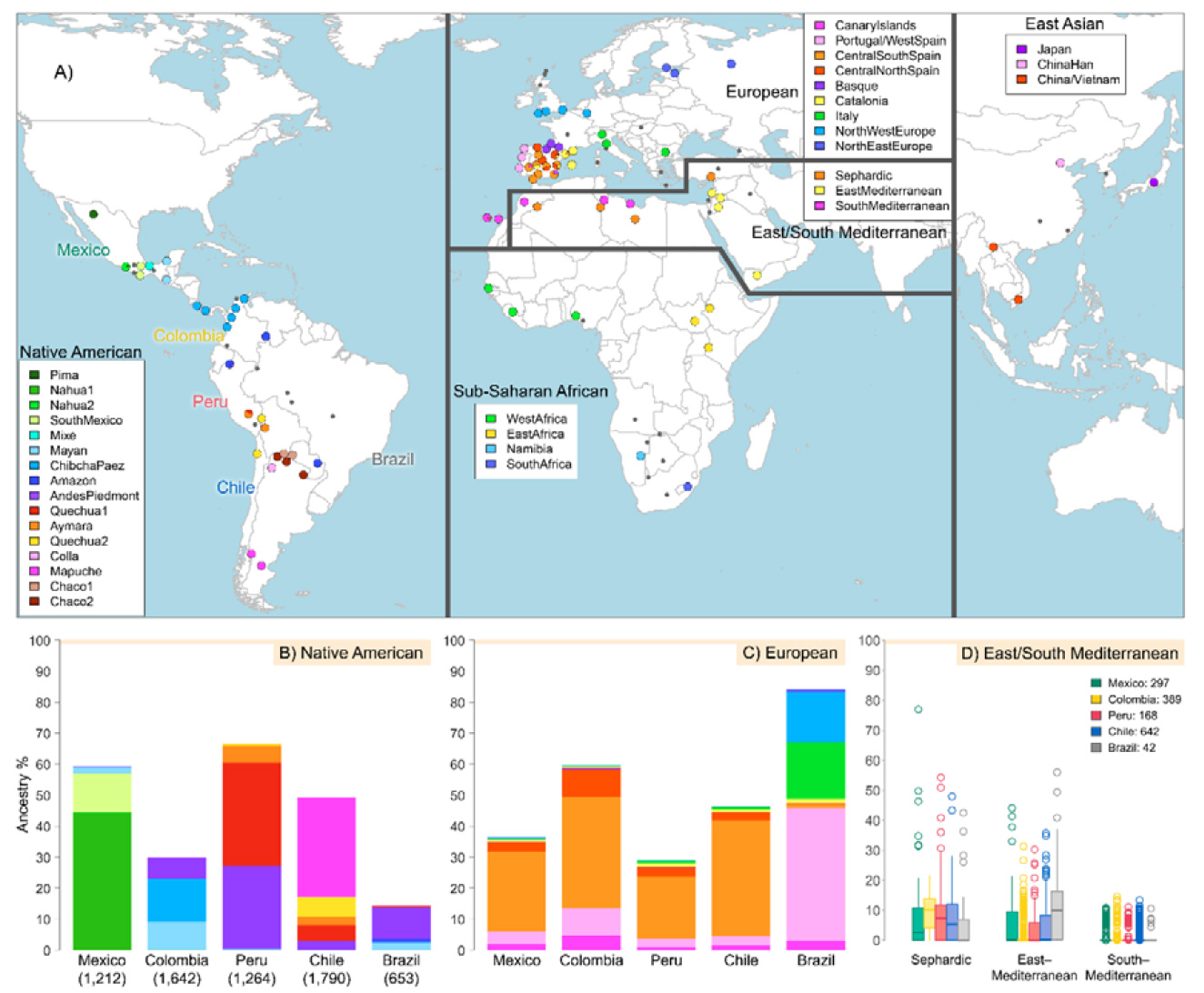Recent preprint Latin Americans show wide-spread Converso ancestry and the imprint of local Native ancestry on physical appearance, by Chacon-Duque et al. bioRxiv (2018).
Abstract:
Historical records and genetic analyses indicate that Latin Americans trace their ancestry mainly to the admixture of Native Americans, Europeans and Sub-Saharan Africans. Using novel haplotype-based methods here we infer the sub-populations involved in admixture for over 6,500 Latin Americans and evaluate the impact of sub-continental ancestry on the physical appearance of these individuals. We find that pre-Columbian Native genetic structure is mirrored in Latin Americans and that sources of non-Native ancestry, and admixture timings, match documented migratory flows. We also detect South/East Mediterranean ancestry across Latin America, probably stemming from the clandestine colonial migration of Christian converts of non-European origin (Conversos). Furthermore, we find that Central Andean ancestry impacts on variation of facial features in Latin Americans, particularly nose morphology, possibly relating to environmental adaptation during the evolution of Native Americans.

I don’t know how I missed this. It is probably the biggest sample of Latin American populations used for genetic analysis, and it seems it is due for publication soon.
One of its most interesting finds is the eastern Mediterranean and North African ancestry found in almost a quarter of the individuals sampled all over Latin America, which the authors attribute to Sephardic Jews or Conversos.
Although these Conversos were forbidden from migrating to the colonies, historical records document that some individuals made the journey, in an attempt to avoid persecution14. Since this was a clandestine process, the extent of Converso migration to Latin America is poorly documented. Genetic studies have provided suggestive evidence that certain Latin American populations, arguably with a peculiar history, could have substantial Converso ancestry1,18. Our findings indicate that the genetic signature of Converso migration to Latin America is substantially more prevalent than suggested by these special cases, or by historical records.
However, strictly speaking, Converso refers to a recent convert, while this ancestry could have also been part of older Sephardic (and obviously other North African) admixture found in Iberian populations during the Reconquista.

Discovered via Lizzie Wade’s article Latin America’s lost histories revealed in modern DNA, Science (2018).
Related:
- Patterns of genetic differentiation and the footprints of historical migrations in the Iberian Peninsula
- Ancient Patagonian genomes suggest origin and diversification of late maritime hunter-gatherers
- Ancient DNA reveals temporal population structure of pre-Incan and Incan periods in South‐Central Andes area
- Paternal lineages mainly from migrants, maternal lineages mainly from local populations in Argentina
- Review article about Ancient Genomics, by Pontus Skoglund and Iain Mathieson